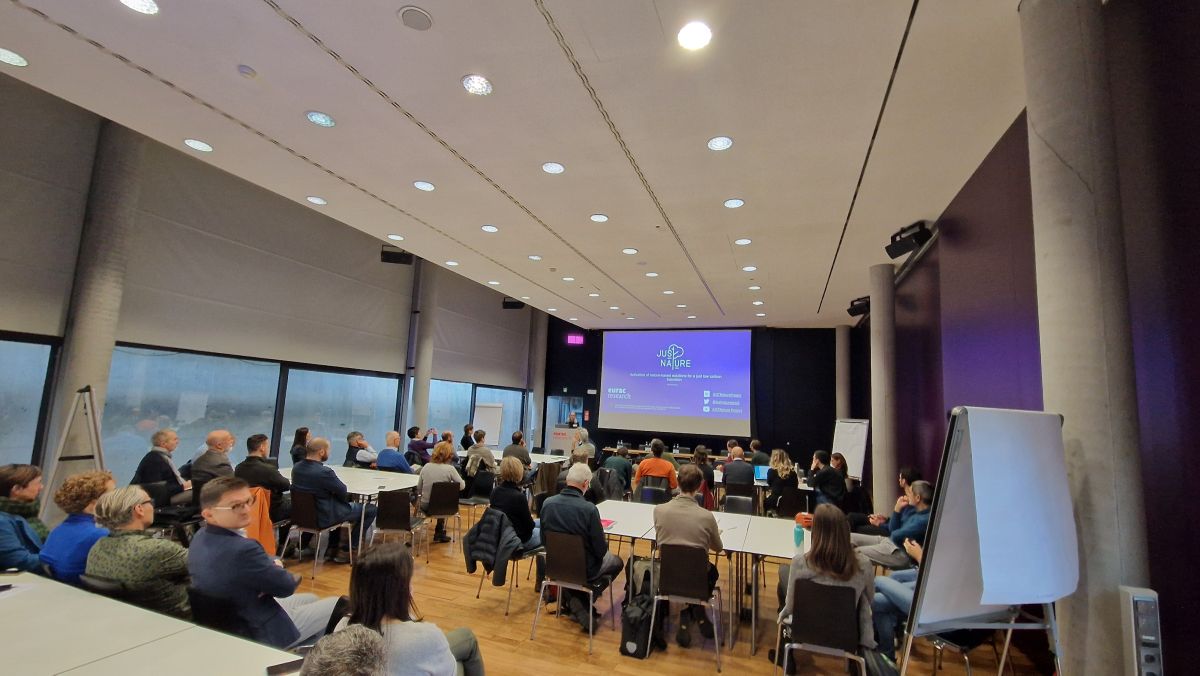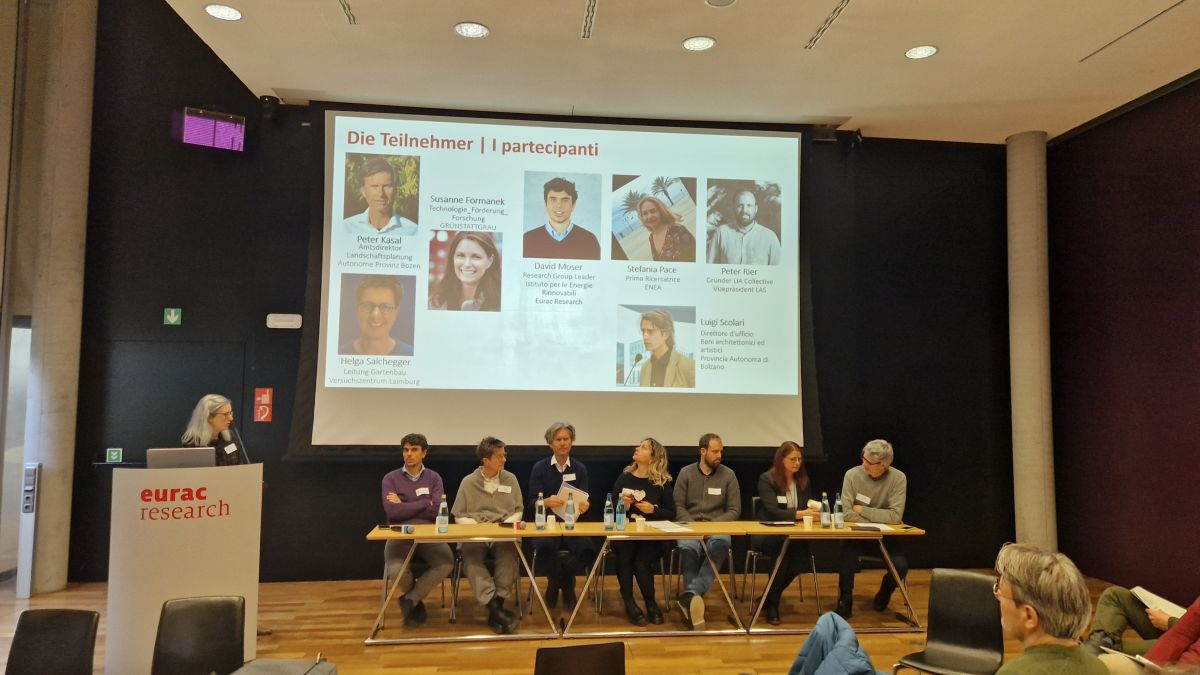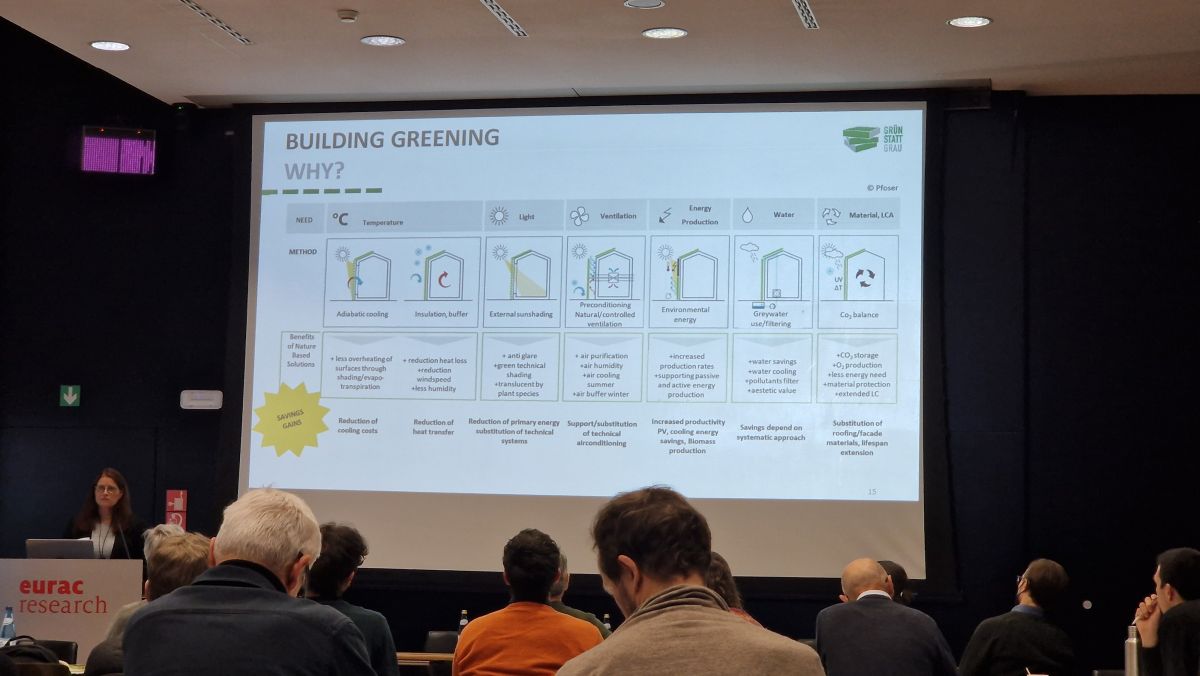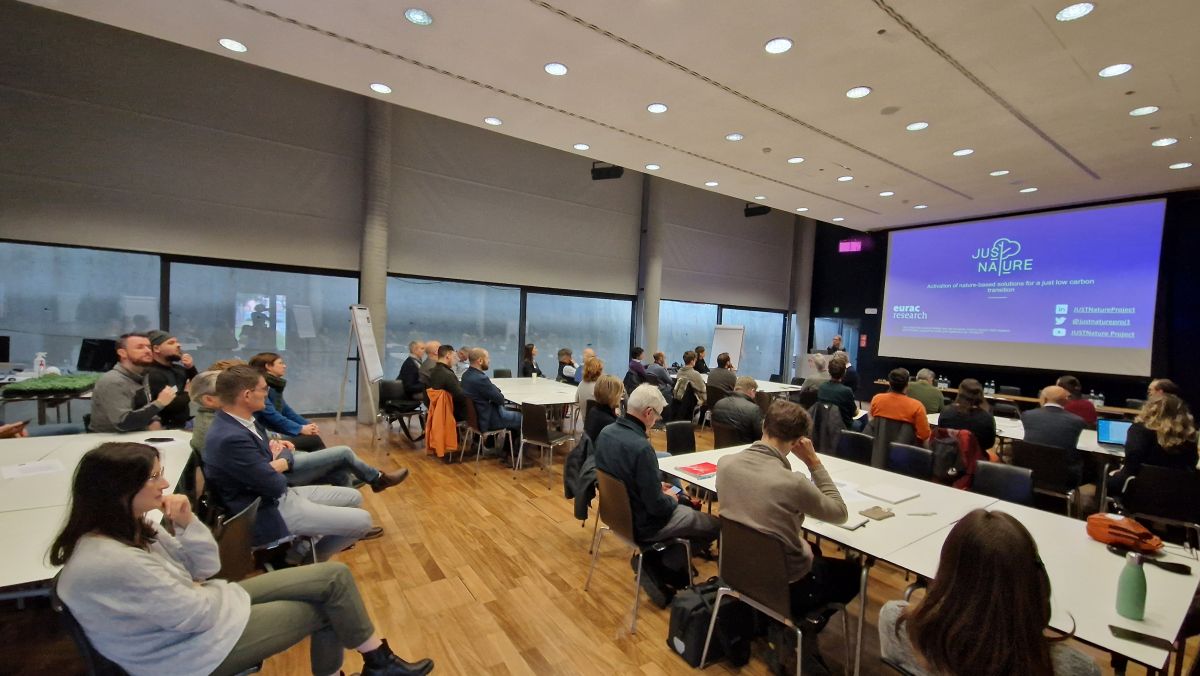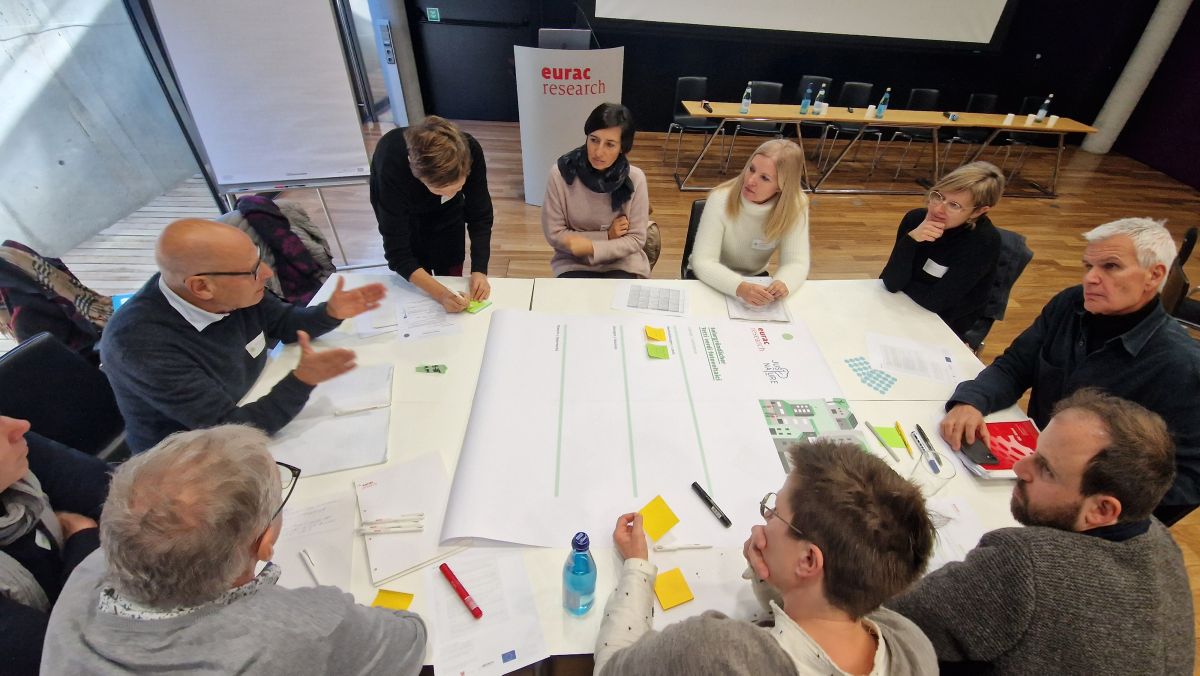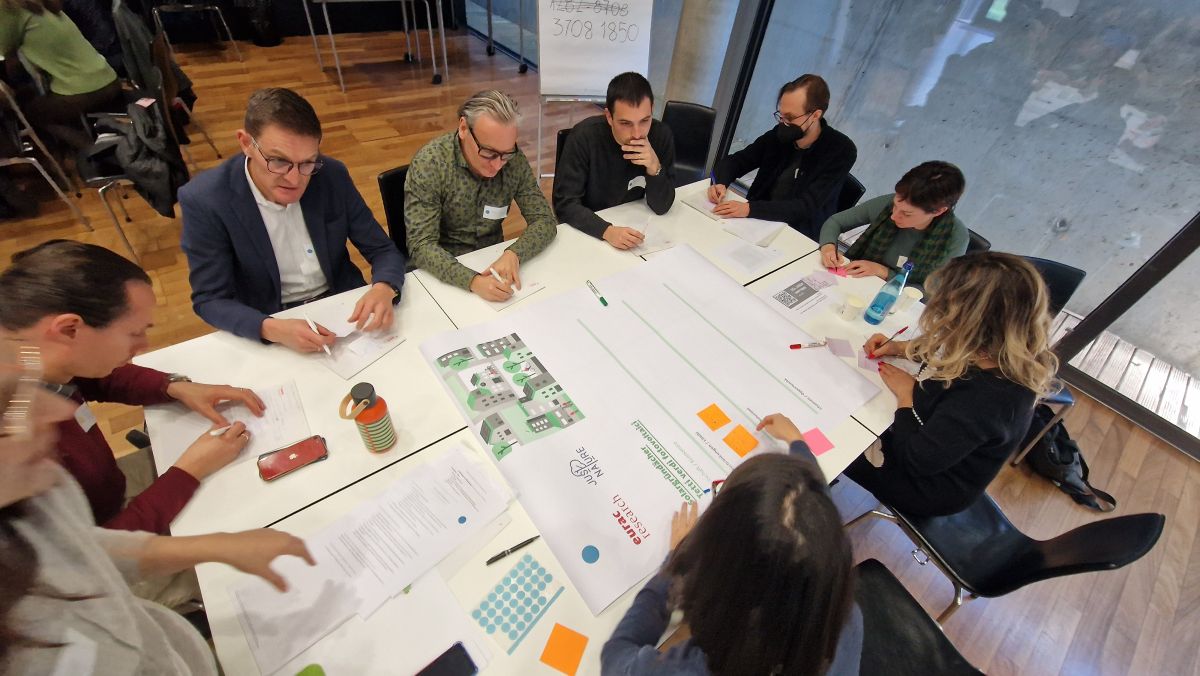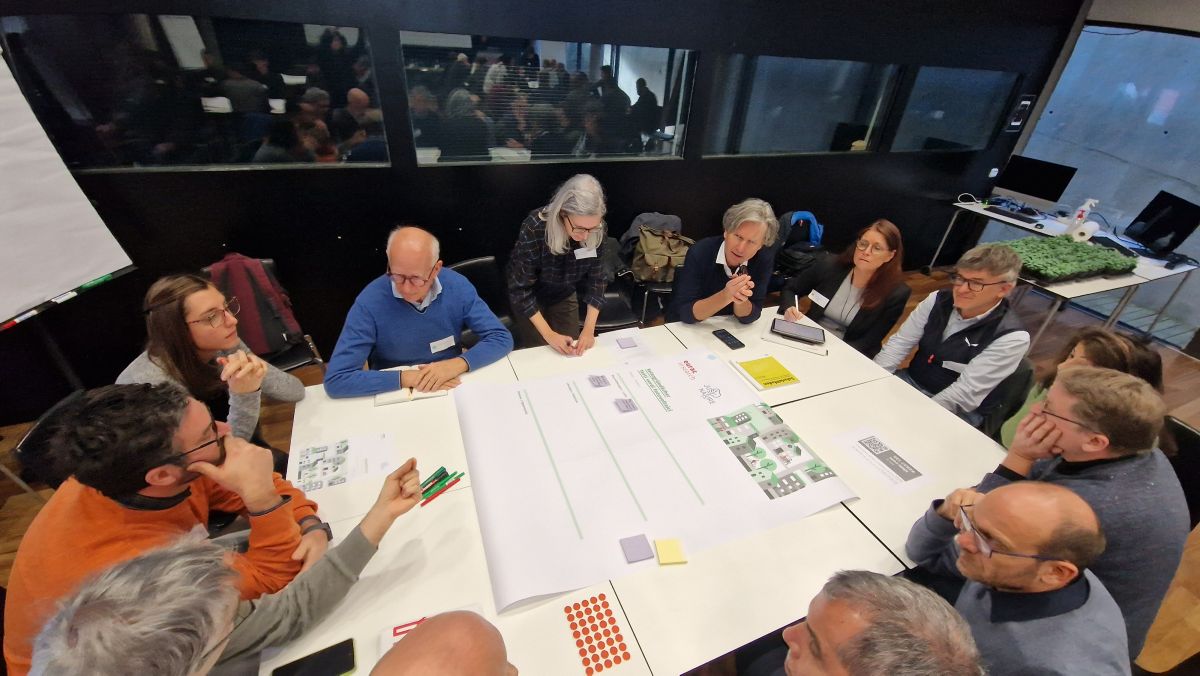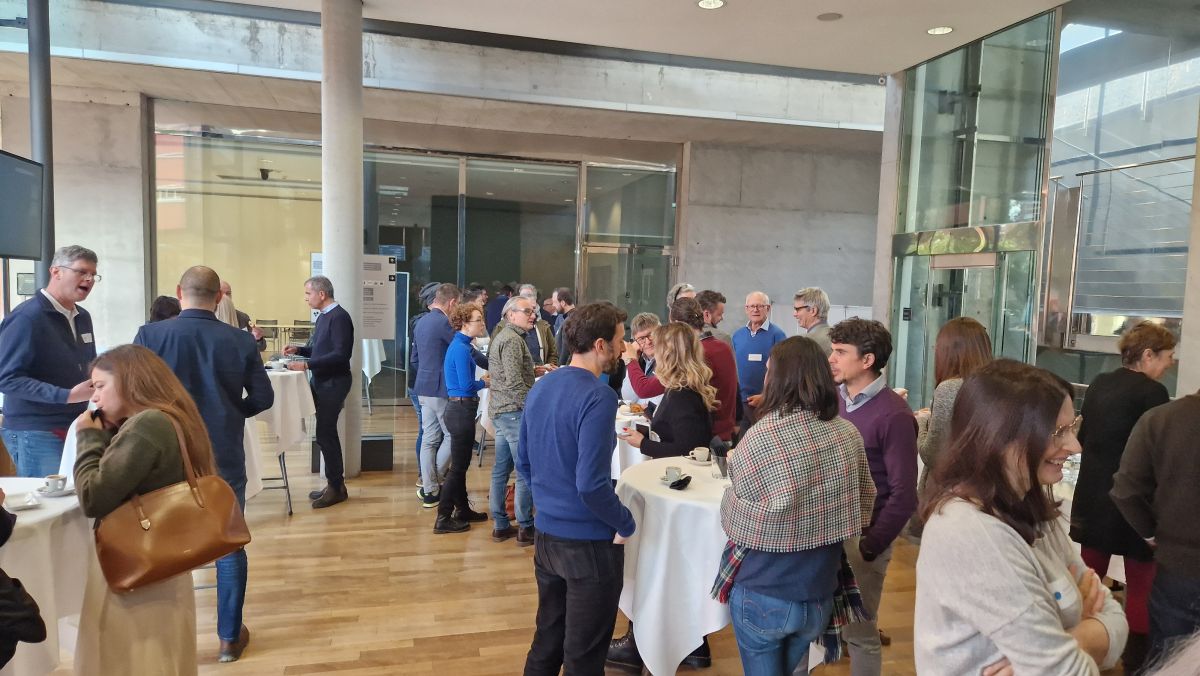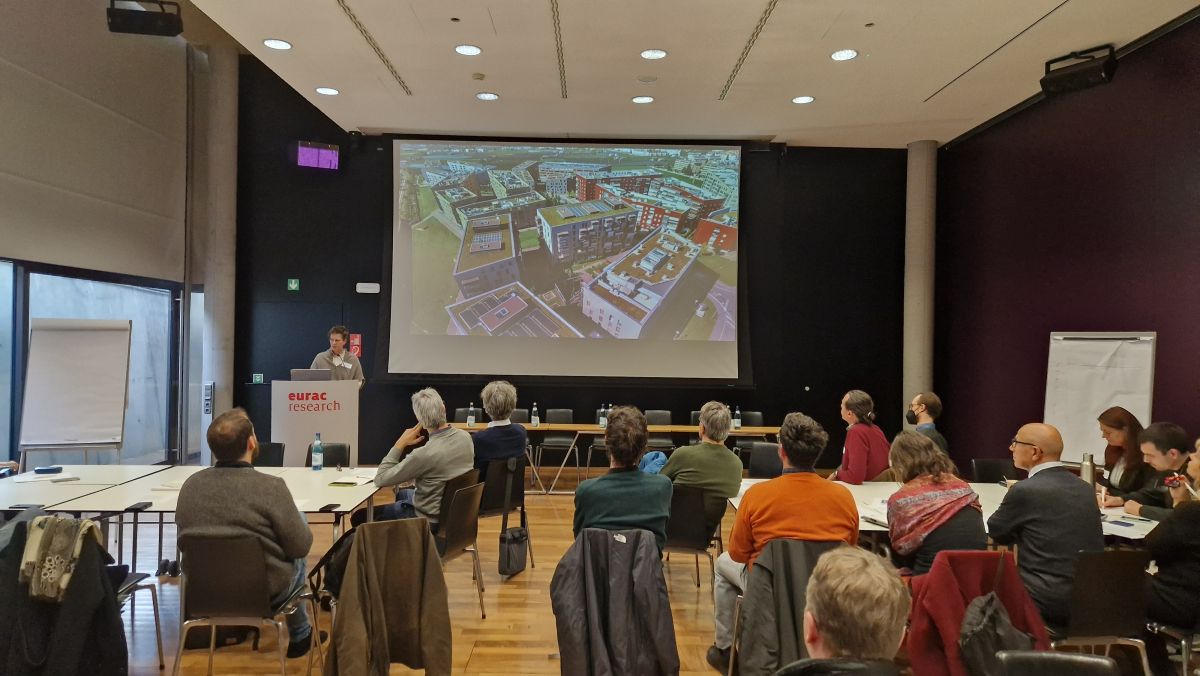Solar green roofs are innovative solutions for the sustainable development of urbanised areas as they combine rainwater management, thermal mitigation and renaturalisation with renewable energy without further land consumption. This topic was the focus of the JUSTNature fourth local stakeholder workshop, which was held on the 12th December 2023 at Eurac Research headquarters in Bozen and brought together the cities of Merano and Bolzano.
The workshop was open to experts from the sector and local administrators, to discuss the technical and strategic aspects related photovoltaics and green solutions.
Several voices from the administrations remarked that South Tyrol can be an open-air laboratory for the experimentation of innovative technologies such as photovoltaic green roofs, capable of combining the preservation of greenery and biodiversity with the production of renewable energy, promoting a new futuristic and necessary vision of a green city for the Province's cities. However, even though photovoltaic green roofs are technologies that have been in the field for almost two decades, adoption in the province is minimal. Requests for installation on roofs (especially on barns in peri-urban and peripheral areas) prefer photovoltaic systems to green roofs, due to a higher incentive for the former than for the latter. Integration between the two is hindered by technical barriers (clear indication of structural aspects), economic barriers (companies building integrated systems), cultural barriers (lack of knowledge of integrated solutions and preference for one or the other technology) and political barriers (lack of clear legislation on the matter).
The Municipalities of Bozen/Bolzano and the Municipality of Meran/Merano are striving to give more space to photovoltaic green roofs within their municipal building regulations (through instruments such as the RIE in Bozen/Bolzano and the Ecological Functionality Index in Meran/Merano), including them as measures to reduce the impact on soil and greenery in the construction or renovation of buildings, and to adapt buildings to the effects of urban changes such as summer heat waves and loss of biodiversity in cities.

